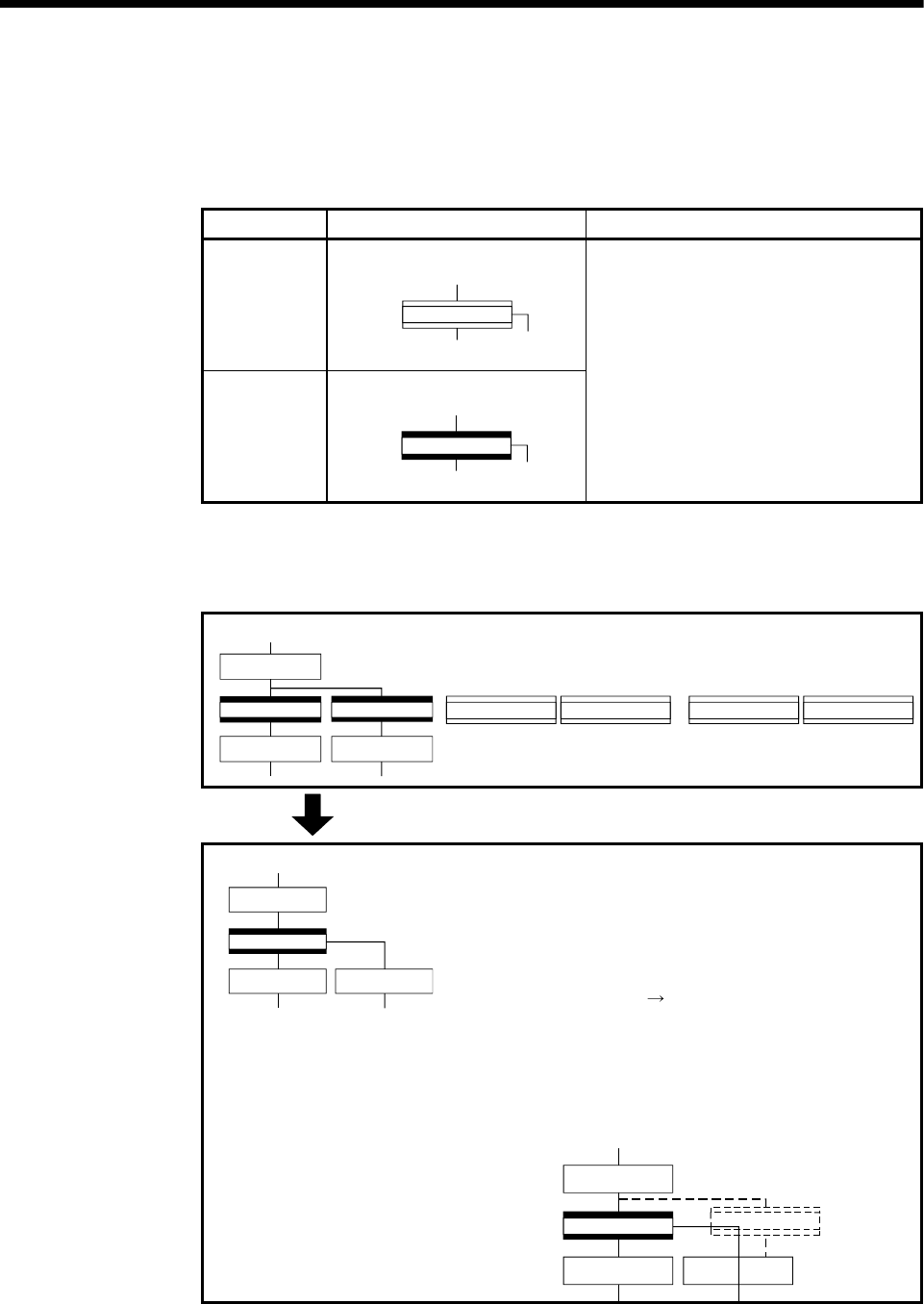
6 - 22
6 MOTION SFC PROGRAMS
6.10 Y/N Transitions
When routes are branch at a transition condition enables and disable, "Shift Y/N
transition" or "WAIT Y/N transition" will be useful.
Name Symbol Function
Shift Y/N
transition
Gn
Y
N
(Not
completion
of condition)
(Completion
of condition)
WAIT Y/N
transition
Gn
Y
N
(Completion
of condition
)
(Not
completion
of condition)
• When a transition condition set at Gn
enables, execution shifts to the lower
step. When that condition disables,
execution shifts to the right-connected
step.
• Differences between "Shift Y/N" and
"WAIT Y/N" are the same as those
between "Shift" and "WAIT".
A Y/N transition is designed to describe the following two-route selective branch
program easily.
• G0 and G1 programs should be different only in
acknowledgement/negation of the conditional expressions.
(Example 1) (Example 2)
<Y/N transition is not used.>
IFB1
G0 G1
[G 0]
M0
[G 1]
!M0
[G 0]
D0!=K100
[G 1]
D0=K100
• Set the G0 program shown in above (Example 1) or (Example
2) as a G0 program.
• The Motion SFC program list codes after conversion are the
same as in the conventional description (different only in the
Motion SFC chart representation). Therefore, "automatic
search for free G number
automatic generation of program
which conditional expression part is logically negated" is
performed during program editing to occupy two G programs.
Using "Program editor" to delete a Y/N transition does not
delete the automatically generated G program (G1 below).
Use "Program use list" to delete that program.
<Y/N transition is used.>
IFB1
G0
IFB1
G1
G0


















